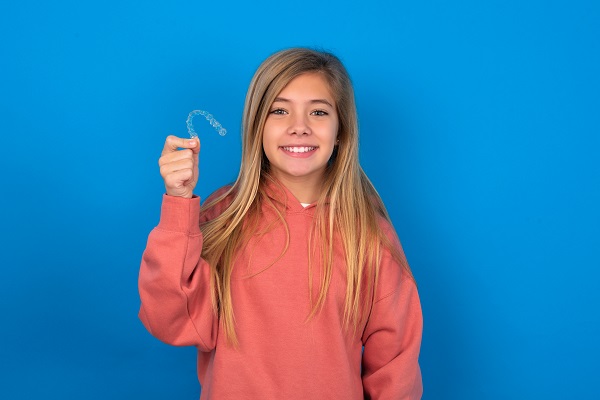Invisalign for Teens: How Long Before Seeing Results?

Whether you choose Invisalign® for teens or another method for straightening your child's teeth, the change occurs gradually. Understandably, your teen may be impatient and want to know when results start being visible. One of the benefits of this method of tooth straightening is that you and your child can get a preview of how the treatment will progress with a time-lapse presentation of 3D models that shows exactly which changes will happen in what order. This should give your teen an idea of what to expect and when.
How does Invisalign® for teens work, and how does that affect the time that your teen starts seeing results?
Rather than putting pressure on all of your teen's teeth at once, Invisalign® is designed to work on only a few teeth at a time. Teeth that are already properly aligned are left alone, while the appliances work on those that are crooked to move them into a better position. This targeted approach reduces the overall treatment time required to straighten teeth, but it can take longer to start seeing results than it would if all of your child's teeth were moving at the same time. Occasionally, Invisalign® patients start seeing results after two weeks time. However, most patients do not see results for up to three months.
Invisalign® is an individualized treatment. Each patient has a custom treatment plan tailored to their own needs. Therefore, it is difficult to predict when each patient will start seeing results because it depends on so many different factors:
- Diet
- Genetics
- Gum conditions
- Jaw shape
- Case complexity
- Patient compliance
What can your child do to minimize treatment time and start seeing results more quickly?
Your child's behavior determines not only how soon results become obvious but also whether the treatment will be completed on time.
Take care of the aligners
To be a candidate for Invisalign®, children must be responsible enough to care for their own aligners. If a set is lost or damaged, your teen may have to go back to the previous set to avoid regression until your provider can make replacements.
Change aligners on time
Finding time for appointments can be tricky between your child's homework schedule and extracurricular activities. However, teens need to make each appointment to change their aligners on schedule to avoid delays in overall treatment time. Keeping to the schedule also helps your teen to be able to see results more quickly.
Wear aligners the recommended number of hours per day
Your teen will receive instructions about how many hours the aligners must be worn per day. Usually, it is between 20 to 22 hours, meaning that your child must wear the aligners all night and during most of the day. If teens participate in sports, they may remove their aligners during practices and games to make room for the mouthguard that protects their teeth from injury. Otherwise, the only activities for which your child should remove the aligners are eating and performing oral hygiene.
Conclusion
Invisalign® for teens should start showing visible results well before treatment is over. However, it may be a matter of months rather than weeks.
Request an appointment here: https://www.breapediatricdentists.com or call Brea Pediatric Dental Practice and Orthodontics at (714) 782-0215 for an appointment in our Brea office.
Check out what others are saying about our dental services on Yelp: Invisalign for Teens in Brea, CA.
Related Posts
Routine visits to a dentist for kids lay the foundation for a lifetime of healthy smiles. Pediatric dental care is carefully structured to meet the developmental needs of children, offering a combination of preventive and restorative services that grow with them. With tailored guidance and techniques, a dentist for kids can preserve oral health and…
Sedation dentistry offers a safe and effective solution for children who experience anxiety, fear, or difficulty remaining still during dental procedures. By creating a calm and stress-free environment, sedation dentistry allows pediatric dentists to complete necessary treatments while ensuring children remain comfortable. Understanding the types, benefits, and safety measures can help parents make informed decisions…
Although receiving orthodontic treatment is not exactly exciting, you can make braces for kids fun. Braces are significantly less noticeable than they were in the past, and some are nearly undetectable. The latest braces are also more comfortable and dependable, allowing kids to focus on the things that matter. Today’s braces provide a wider range…
A key goal of pediatric dentistry is establishing healthy oral hygiene habits early to promote long-term oral health. With guidance from a pediatric dentist, parents can help their children understand how to maintain clean and healthy teeth at home. This early exposure can make healthy habits — like brushing twice daily, flossing daily, and eating…
